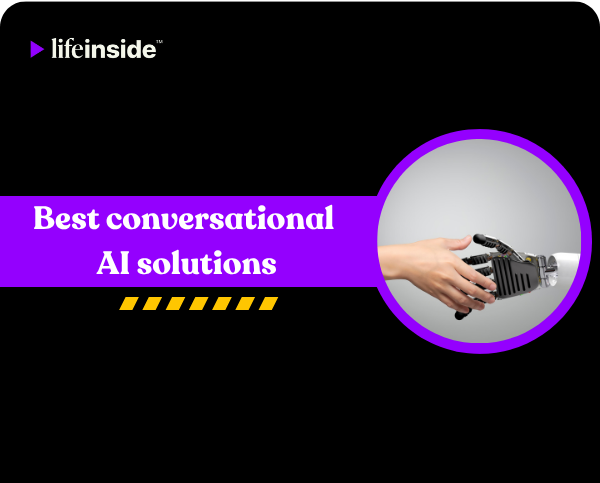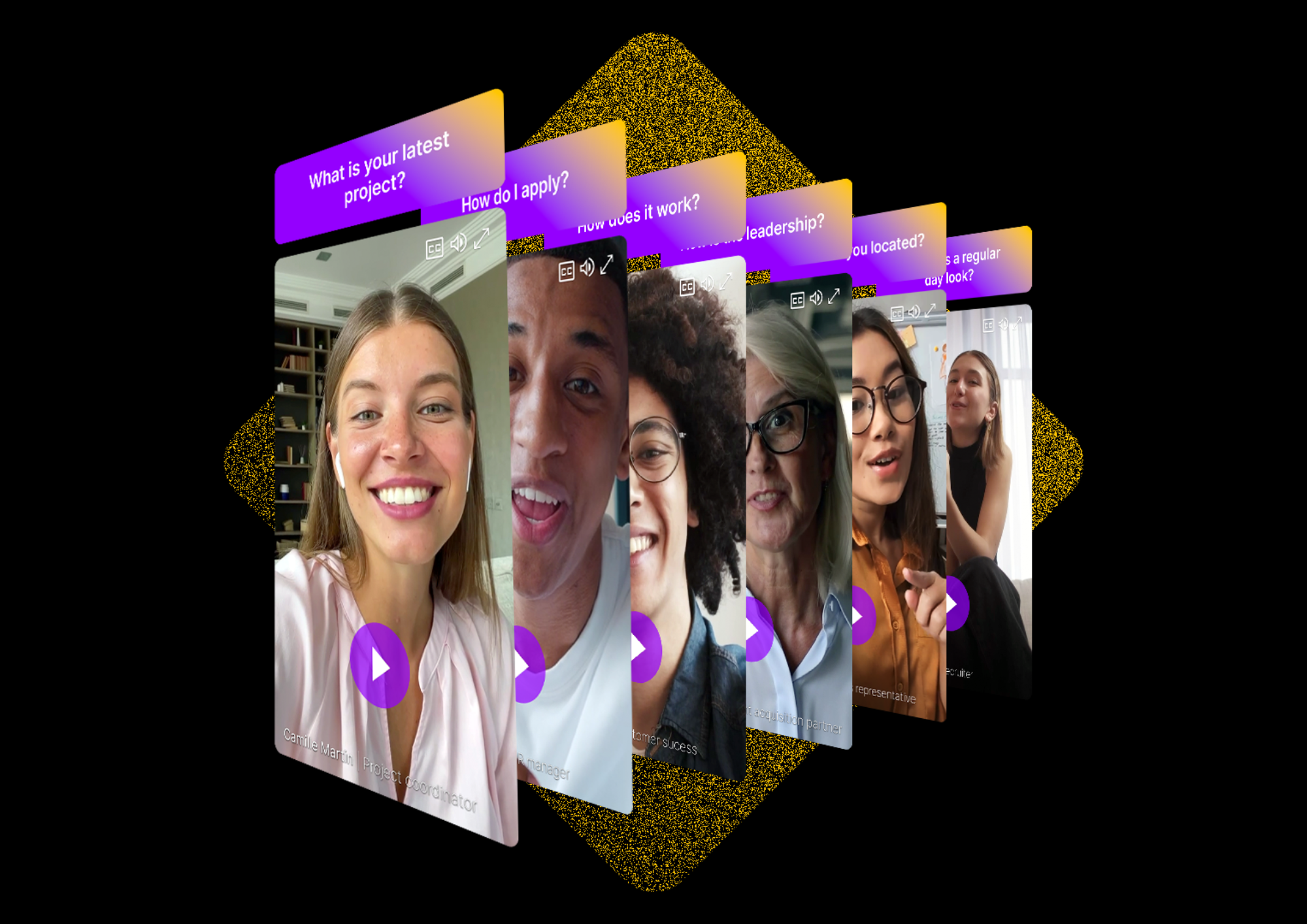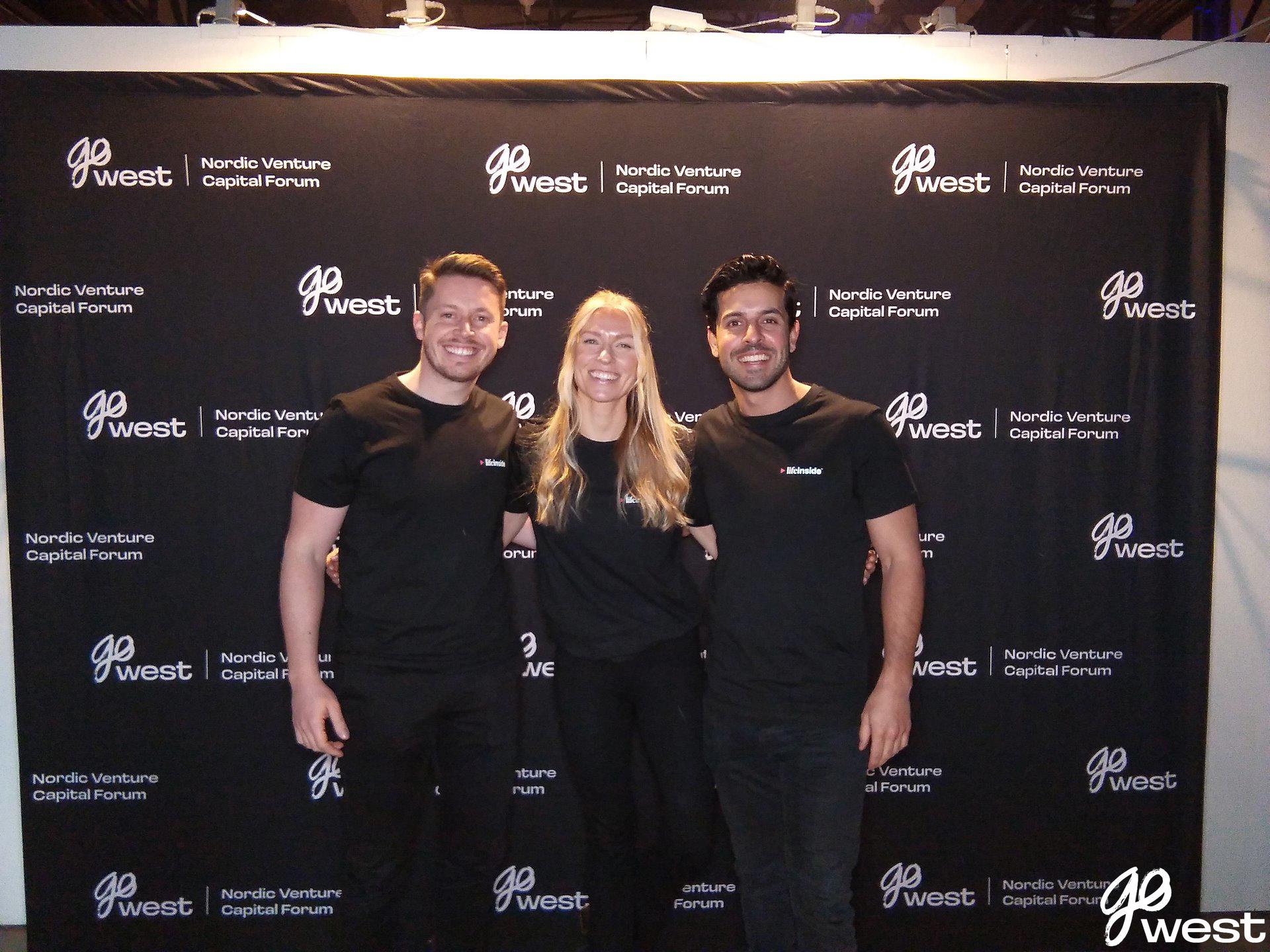Conversational AI tools are there to help you connect with customers in a human manner without taking any form of assistance from humans; this is as simple as we can put it. You can also use them for simplifying operations and tackling industry challenges. The ability to act, speak, chat and converse with customers like a real human comes from Natural Language Processing (NLP), which allows computers to understand and process human language.
Enterprises that are working in highly regulated sectors like banking, telecommunications and government offices require conversational AI to support customer-centric workflows, and at the same time adapt to the ever-changing demands, while keeping the data hidden from attackers. A strong AI platform can easily be the difference between a seamless customer experience and failing short of expectations.
As a result, we have come up with the list of Top 5 Conversational AI solutions which are specifically designed to meet a particular set of demands for both large and small-scale enterprises. Each AI solution presented here has its own set of special abilities that will help you elevate customer engagement and operational performance. We are sure that after reading through this blog, you will have a clear picture of which AI solutions match up with your requirements in the best way possible.
5 Best Conversational AI Solutions
1. Lifeinside.io’s AI Video Agent
Lifeinside.io is a platform where you can create your own custom AI video agent, a conversational solution that will represent your customer service 24x7. The technology used by this platform is game-changing in the way organizations are able to communicate with their customers, employees, and even stakeholders in an increasingly digital environment.
With this form of conversational AI platform, you don’t have to rely on humans working for you; the AI will handle all the support-related tasks for your organization to balance both efficiency and accessibility.
Furthermore, AI chatbots for businesses will bridge the gap between responsiveness, where real-time support is not available. With these AI video chatbots, your customers can interact with an AI avatar in a natural manner, which is more engaging than generic chatbots while maintaining the convenience of using self-service tools.
Core features:
Real-time conversational video avatar engages with your customers in a human-like manner. You can train these avatars as per your company’s unique knowledge base. Thus, it can answer questions and guide interactions across websites, portals, landing pages, and even curate help centers for your customers where they can interact with ease.
Lifeinside.io’s video and voice AI agents can speak over 60 different languages, and with a little bit of training, can adapt the tonality you use with customers, resulting in support for a global and diverse audience.
Continuous 24/7 availability helps in providing immediate, consistent engagement without causing any form of downtime. You can use these video AI agents when it comes to onboarding new employees, candidate guidance, and employee training as well.
You can make these video agents to guide users to book their meetings, subscribe, and even make purchases via interactive CTA integration that was present in the video.
Strengths:
By blending in human-like expressions in video using voice and gestures, the AI agents provided by Lifeinside.io can create genuine empathy that results in instant trust and rapport with users.
The interactive style of AI video agents transforms passive visitors who are just there to browse the service or products into active participants. This increases the likelihood of them making a purchase or converting into a lead.
The interactive AI-based video agents can adapt to your needs. In addition to this, they can dynamically evolve with the user's journey, offering tailored guidance and answers that foster a personalized user experience at a scale you need, no matter the choice of language, departments, or use case.
Weaknesses:
The responses given by video AI agents rely entirely on training content and structured company data. If the underlying database is outdated or incomplete from your end, the AI agent will use it to deliver inaccurate, generic, and sometimes irrelevant answers.
Ideal Users:
-
Marketing teams
-
Sales professionals
-
Customer support departments
-
HR & talent acquisition managers
-
Training and learning coordinators
-
Event organizers and publishers
E-commerce businesses
Example:
One of the great examples of Lifeinside.io’s video AI agents is its ability to transform a static website into an interactive conversational platform that makes it possible for the AI chatbot to engage with visitors in real-time.
Use-case:
- Customer support
- Sales and marketing
- HR and talent acquisition
- Training and e-learning
- Event management
- Customer engagement for global enterprises
- Video production automation.
2. Ada AI / Ada
Ada AI is an advanced virtual assistant platform for businesses that are looking to provide 24x7 customer support to their customers via human-like chat conversations. It provides the right answers to users in the form of human-like chat interactions.
From this AI-driven customer support tool, you could drive actions in real-time; it comes with support for 60 languages. It integrates almost seamlessly with multiple digital channels for quick access.
Core features:
A. Advanced Natural Language Processing (NLP)
It helps Ada AI to understand simple to complex customer queries and respond to them conversationally.
B. Automated Responses for FAQs:
If a customer asks one of the frequently asked questions, the response time will be reduced as it stores routine answers separately.
C. Personalized Responses:
Ada AI can deliver instant and relevant answers to returning customers. It also stores previous search history or website journeys that the user has followed to come up with a more personalized response to their query.
D. Customizable Workflows:
In case you need to train the voice AI agents or chatbots of Ada AI for your specific industry needs and for different customer journey stages, you can do that too, using simple steps. Furthermore, you can also integrate this AI chatbot with your existing tools.
Strengths:
-
Ada AI is one of the best omnichannel conversational AI as it understands the diverse customer intents with the help of highly accurate NLP.
-
The fast automated responses enhance the overall customer satisfaction and reduce support load.
-
The AI chatbot keeps on learning, so it improves over time, thus increasing efficiency and personalization.
-
With the help of sentiment detection, it enables empathetic and context-aware interactions.
-
Gives business owners robust analytics where they can find actionable insights that could be used for optimising support and user engagement strategies.
Weaknesses:
- Sometimes a too complex or nuanced query will require human intervention.
- Customisation could be a challenge for people or businesses that don’t have technical expertise.
- We have found some of the legacy systems having trouble integrating with this AI chatbot for business.
- Occasional difficulty in understanding slang or regional dialects.
Ideal users:
- Customer support teams
- E-commerce businesses that are looking to provide instant product assistance
- Telecom and utilities companies
- Financial services
- Healthcare providers
- Enterprises that are looking to provide multi-channel and personalized customer engagement.
Example use case:
Ada AI chatbots for businesses can be used for boosting user engagement over WhatsApp and making them come to the e-commerce website to once again see the products for which they have opened the website before.
3. Drift AI
Drift AI is an AI-powered generative conversational agent provider for sales and marketing platforms. It helps businesses to engage with their online customers in real-time via AI chatbot agents. From this NLP AI agent platform, you could automate lead qualification, schedule meetings, and even push personalization interactions to improve customer experiences and generate qualified leads.
Key use of drift AI is the ability to turn website visitors into leads, enhance the sales conversation funnel, automate routine customer support tasks while integrating seamlessly with CRM systems.
Core features:
A. AI-Powered Chatbot:
The context-aware conversational AI agents provide 24/7 handling of routine queries and schedule your meeting autonomously.
B. Live Chat Integration:
Using Drift AI, you could make customer support seamlessly transition conversations that AI-chatbots handled and convert them into sales or provide personalised support.
C. Conversational Landing Pages:
Apart from providing you with chatbots, this platform can also be used for the generation of dynamic pages that keep users engaged. The chatbots are designed in such a way that they can keep up two-way conversations to boost lead capture and sales conversion.
D. Automatic Chat Routing:
The machine learning algorithm directs user conversations to the right sales support to keep the interaction efficient.
Strengths:
The AI-backed chatbots could automatically detect the best leads from the group, route them to the correct sales representatives, to reduce the human workload.
You could send targeted personalised messages to customers based on their behaviour and web page interactions to increase conversion rates.
Drift AI provides a significant amount of CRM integration with top CRMs and marketing tools to keep you aligned with key metrics and insights.
Weaknesses:
It is a bit expensive in comparison to other AI chatbots that provide simpler solutions; this could lead to potential limited access for small businesses.
The AI chatbots have a higher dependency on a working internet connection; without a proper connection, they could misinterpret the user’s input.
There’s a bit of a learning curve for users who are new to chatbot usage, making it difficult for them to use the true potential of the platform.
Ideal users:
B2B companies that are aiming to convert website visitors into qualified leads via real-time conversations.
- Sales and marketing teams
- Customer support departments
- Enterprises that require a multi-channel communication platform
- Organisations that are looking for a way to improve their buyer experience.
Example use-case:
Drift AI can be used for automating lead qualification, booking meetings, and engaging potential prospects in real-time. It can also be helpful in deploying personalised intent-based messaging on websites and other digital channels for boosting conversion.
4. Aisera
Aisera is an enterprise-level conversational AI platform that specialises in providing AI solutions that automate and streamline services across IT, HR, customer care, sales, and other business functionalities.
It leverages the power of generative AI, large language models that use natural language processing (NLP) in AI agents to provide advanced automation that helps in delivering personalised, predictive, and proactive user support, thus increasing the overall efficiency of operations.
Core features:
A. Powerful Voice AI Agents Platform:
It works as an AI agent platform that provides you with autonomous execution of tasks, answering questions, and transforming workflows across the enterprise.
B. Equipped With Generative AI Studios:
It uses tools like LLM Studio, Workflow Studio, Event Studio and even Prompt Studio that can bring life to your creativity. All of this work is with a low-code/no-code interface.
C. Conversational AI:
The multilingual conversational AI is helpful in providing human-like interactions while also supporting intent matching, context switching, and disambiguation.
D. AI-Driven Service Management:
It automates IT service management processes like incident, change and request management using proactive and predictive issue resolution
Strengths:
- Generative AI and LLM integration, which results in advanced, context-aware AI responses and workflow generation.
- Conversational AI backed by multilingual support.
- AI copilot, along with Agent Assist, is to enhance productivity and real-time assistance.
- Strong security compliance with the TRAPS framework, thus ensuring the topmost level of privacy.
-
Rapid customisation and deployment of AI applications using low to no-code workflow builders.
Weaknesses:
- Initial setup and customisation are a bit complex, and it is time-consuming; at the same time, it requires technical expertise.
- High implementation and subscription costs are causing limited accessibility for small to mid-size businesses.
- Performance heavily relies on the quality and structure of the data that is fed to the system.
Ideal users:
- Large enterprises are seeking to automate IT services.
- Customer service teams
- IT departments that are responsible for incident management
- Human resource teams
- Businesses with complex workflows
Example use-case:
Grand Thornton uses Aisera to auto-resolve 75% of employee requests, which saved employee hours and enhanced user satisfaction with faster issue resolution.
5. Tidio AI
Tidio AI is an AI-driven customer support tool that is designed to make businesses automate support, increase conversion rates, and improve customer experiences. Here, you can have live chat, AI-powered chatbots, and no-code automation, which results in seamless and efficient customer communication.
Core features:
A. Lyro AI Agent:
Tidio AI uses a conversational AI chatbot that understands and responds to customer queries via NLP and large language models.
B. Keyword & Intent Recognition:
Specific chatbot flows are pushed based on keywords used by users, which allows customization and intelligent automation of interactions.
C. Knowledge Base Training:
It comes with the ability to train AI on FAQs, content present on your website and custom data to improve accuracy.
D. Multi-Channel Support:
Integrates chat on websites, messenger, Instagram, and even with email for cohesive customer communication.
Strengths:
-
It has a user-friendly interface, making the entire process of setting it up ideal for anyone.
-
Powerful conversational AI understands natural language to deliver relevant automated responses.
-
Affordable pricing plans resulting in advanced AI chatbots for business, accessible for SMBs.
-
AI copilot is there to help you with response suggestions when you are taking a customer call, and it will also provide answers to complex issues. It can write step-by-step guides to customer care representatives or even direct to customers as well.
Weaknesses:
- This generative conversational agent platform lacks advanced AI capabilities, meaning it is not optimal for handling complex query handling.
- AI response accuracy can vary depending on training data quality and chatbot configuration.
- AI-generated replies only apply to the first email; after that, human intervention is needed.
- Customisation limitation for complex workflows, along with nat
ive integrations.
Ideal users:
- SMBs that are looking to integrate AI-powered customer support.
- E-commerce stores
- Marketing and sales team
- Customer service team
- Businesses that are looking for multi-channel automation
- Companies are looking for affordable AI agents.
Example use-case:
Tidio AI can be useful in increasing customer engagement and sales numbers, automating answers to common customer queries to improve response times, along with customer satisfaction.
How to Choose a Conversational AI Solution?
Here are some of the key factors that you need to keep in mind when evaluating different conversational AI solutions for your business needs.
Define Business Goals:
The first thing you need to do is identify the use case of an AI solution in your business, see if you require it for customer automation, lead generation, internal workflow automation or sales engagement.
Evaluate Core Features:
After defining the goals, do some research to find out which AI features are a must for your business. You could go with NLP, multi-channel support, customisation & workflow builder, or you are looking for an analytics and reporting tool.
Integration Capabilities:
Ensure that the virtual assistant software that you are about to choose is compatible with your existing CRM, marketing automations, helpdesk and other enterprise tools to streamline the operations.
Security Compliance:
Verify the compliance of voice AI agents, see if it matches up with the relevant data privacy regulations, such as GDPR, HIPAA and robust security measures that you require to run a business safely.
Future Trends in Conversational AI
Let’s look at the upcoming shift that’s about to happen in the coming years in the field of conversational AI:
Agentic AI and Autonomous Digital Workers:
Conversational AI is evolving into autonomous agents that can make decisions on their own, set goals, and complete tasks while requiring minimal human interaction. They are capable of finishing up the task from start to finish.
Emotionally Intelligent Chatbots:
AI systems are getting more advanced, and they are learning how to handle human emotions in conversations. The next big thing in conversational AI is the inclusion of emotionally intelligent chatbots, which will be more empathetic towards the user which allows them to come up with more personalized replies.
Advancements in (NLP):
Conversational AI will go beyond words and sentences. They will
be able to grasp situational context, such as learning who’s speaking, what their intent is, guess the emotions they are going through as they speak or reply to them and cultural nuances.
Hyper-personalization:
AI is going to maintain long-term memory of conversations that you had with it across different platforms, such as AR, VR, social media platforms like Instagram, Facebook, and even chats you had on WhatsApp.
Shift From Building To Buying:
In the coming years, once the dust of building a conversational AI of your own settles down, businesses will start looking for companies that could provide them with plug-and-play conversational AI agents that will speed up the adoption and maximise ROI.
Embrace Conversational AI To Unlock The Power of Personalized Customer Engagement
If you are aiming to deliver a true personalized customer engagement experience that seamlessly blends user requirements with your offerings, then it is high time you start looking at conversational AI strategic imperatives for your business.
AI is continuously improving to provide companies with around-the-clock support and to understand complex customer needs. Unlock new opportunities to gain customer trust while uplifting the efficiency of your customer operations and staying ahead of the curve in the digital marketplace.
Frequently Asked Questions:
1. What is the difference between rule-based and conversational (AI) chatbots?
The main difference lies in their complexity, along with the ability to understand user inputs. Rule-based AI chatbots have strict pre-defined scripts on which they run; thus, they provide predictable responses and a structured scope.
Conversational AI chatbots use machine learning, natural language processing and context-awareness algorithms to understand user intent. This makes it possible for conversational AI chatbots to come up with a more natural and personalised user experience.
2. How do video agents differ from text-based bots or voice bots?
With the use of AI-based video agents, you get to create a dynamic and interactive user experience. They combine visual elements with conversational AI to deliver personalised responses, even emotionally aware communication, which often uses facial expression and tone analysis.
Text-based bots or voice bots rely heavily on written language to communicate with users. In addition to this, there is no extra layer of human feeling that comes with AI video agents. The voice bots are effective for real-time, urgent and multi-tasking scenarios, but they are less precise when it comes to handling complex queries.
3. Can conversational AI handle multiple languages and dialects?
Yes, it can handle multiple languages and dialects. Conversational AI uses NLP and machine learning models to understand, interpret, and respond to inputs that come in various languages and dialects.
4. What metrics should I track to measure the success of a conversational AI solution?
Key metrics you need to include are:
- User engagement
- Containment rate, also known as self-service rate
- Resolution time
- Fallback rate
- Conversion ratio
- Retention rate
- Cost savings.
5. How much does a conversational AI solution cost, and what factors influence pricing?
It depends on how much complexity you require from the conversational AI agent; a full-fledged custom conversational AI agent starts from $5000 to over $1 million.
Key factors that affect the pricing of conversational AI are:
- Complexity and customisation
- Integration requirements
- Usage volume
- Deployment type
- Support and SLA levels
- AI model licensing
- Industry-specific needs.




